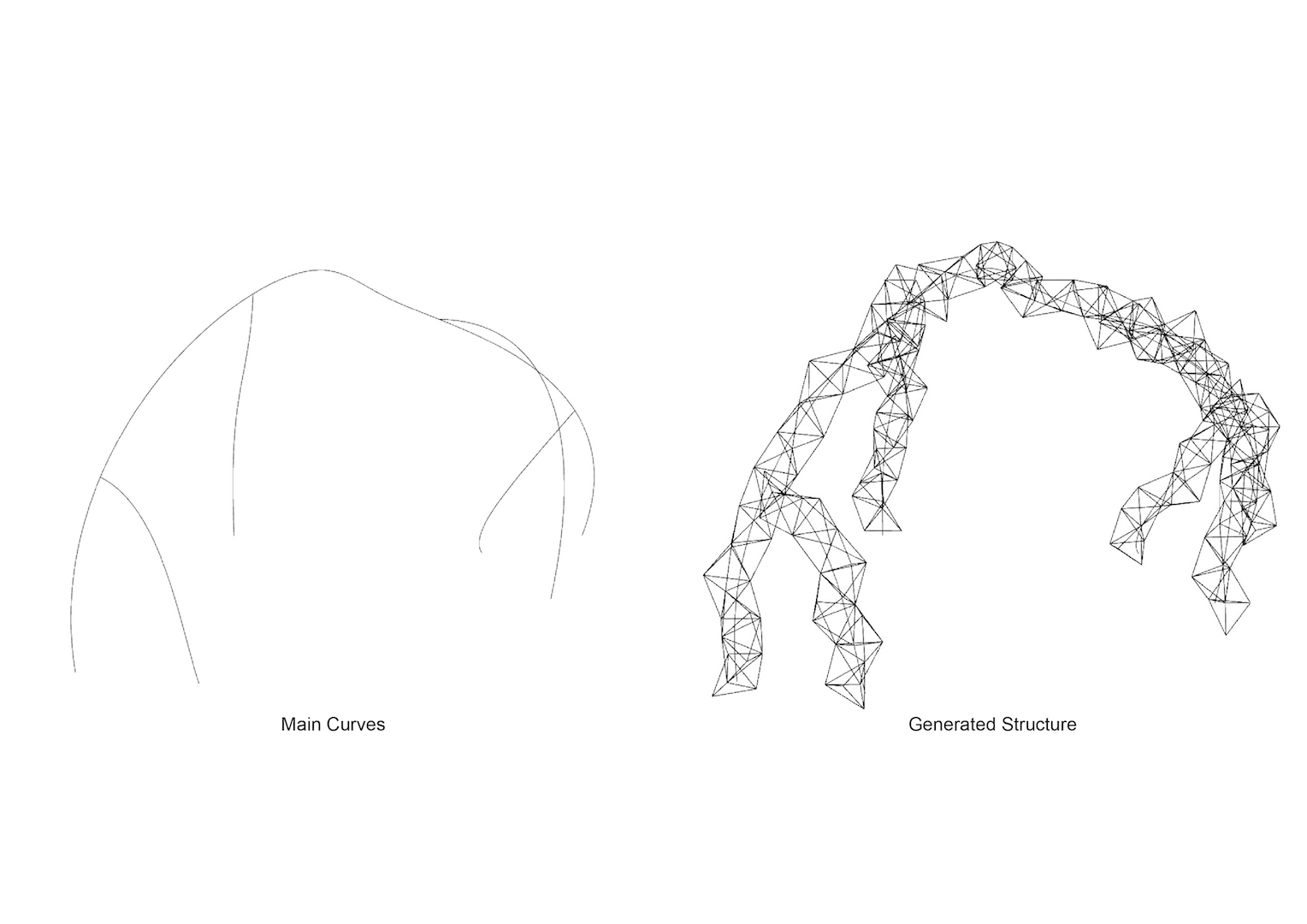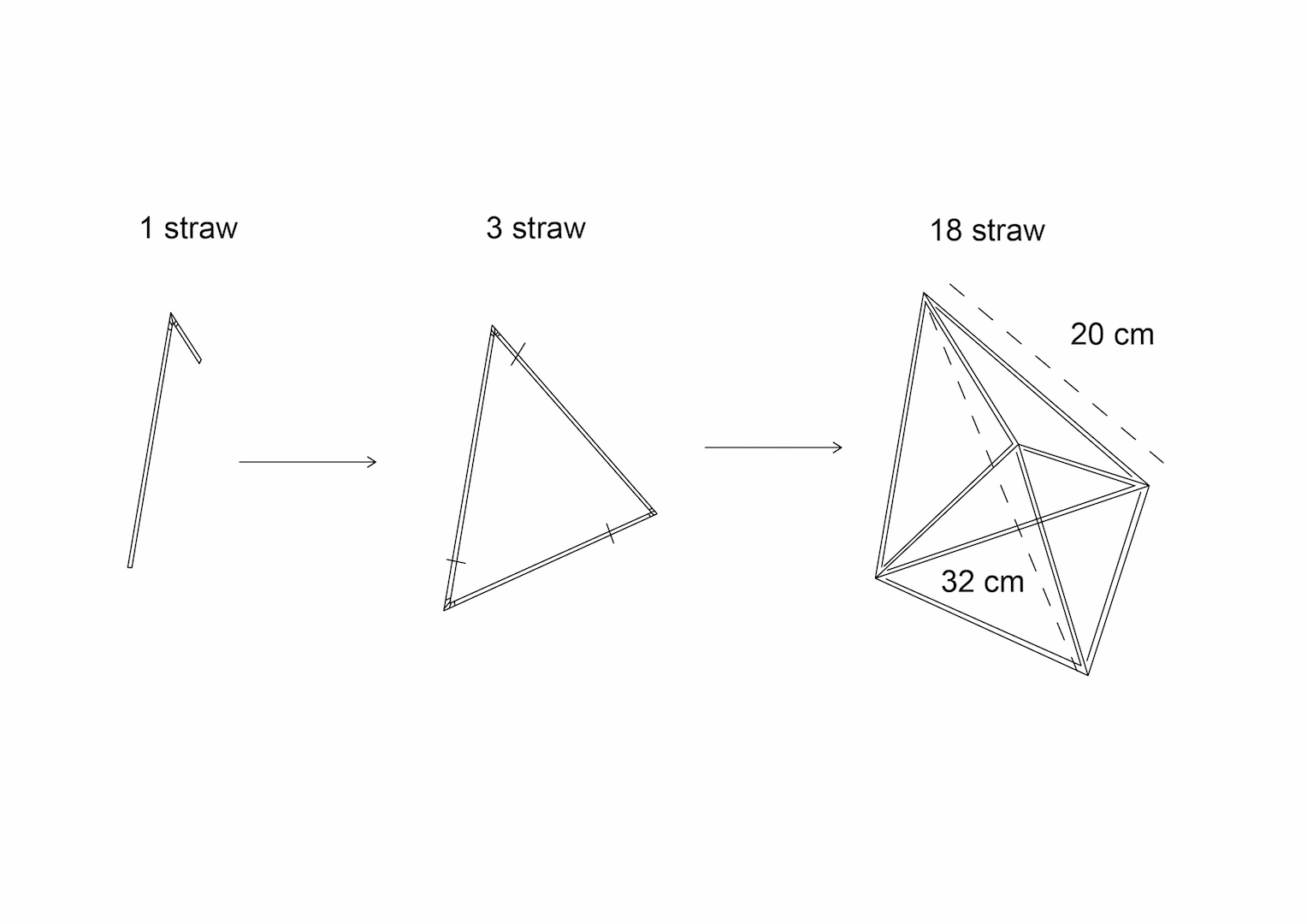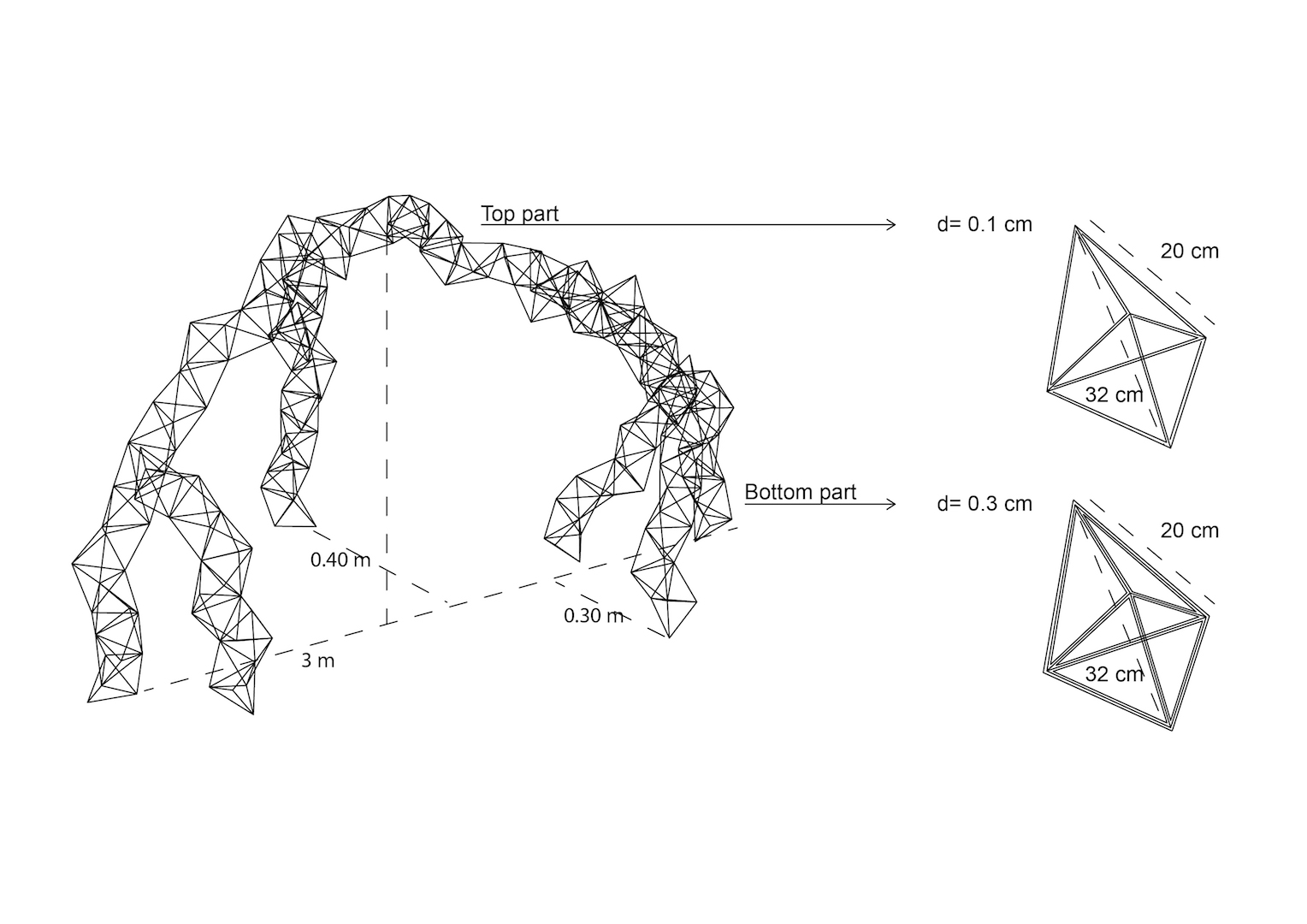Tutor: Silvia Brandi.
Computational expert: Rodrigo Aguirre.
Students: M. Alazzi, N. Argyros, M. Elatab, J. Havlik, B. Paksoy.
Every year over 6.4 million tons of plastic debris end up in the sea, forests and lands. As the standard kinds of plastic are not degradable, they drift around the oceans for decades or indeed centuries and collect in enormous gyres of plastic debris. Nowadays, limiting the consumption of resources and materials in construction projects is an objective every society is trying to pursue by focusing on the advantages of recycling and material reuse. Plastic trash, such as drinking straws (made out of polypropylene or polyethylene), could be considered one of the most common plastic trash where only in the United States 500 million straws are used and discarded every day.
</p>
The aim of our project was to rethink the straws as construction components, finding different ways on how an object weak and thin like the straw can be used in architectural scale. After analyzing the shape and characteristics of the components we decide to create a more complex component by fitting three straws to form a loop triangle (taking advantage of the ability of the straw to bend and the solid straight pipe to reinforce the component structurally). Our experiments and iterations ended up in building a final hyper component based on two welded pyramids. These hyper components were classified according to different thicknesses which we gained by grouping more of the triangle loops (the hyper component will gain more structural strength to work on both compression and tension). Using Grasshopper we create an interface that allows the user to design curves, on this curves we apply aggregation rules that follows the path of the curve. In that way the user with just designing the curves will be able to generate the correct way of aggregation of the hyper-component and he will be able to build the straw structure.



As final stage we simulated our final structure in Karamba. With the structural analysis we were able to understand which parts of the structure are more weak and reinforce them. For high bending moment we use thick components (0.3 cm diameter) and on the other parts lighter components(0.1 cm diameter). 124 hyper components of different thicknesses, made out of 3996 straws, assembled using zip locks creating a lightweight structure embedding the basic architectural notion of living space. The most important part was treating the drinking straws as responsive flexible objects not as mass material and assembled in a really possible and comprehensive manner, triggering a large number of possibilities for future trash material hacking and reuse.






